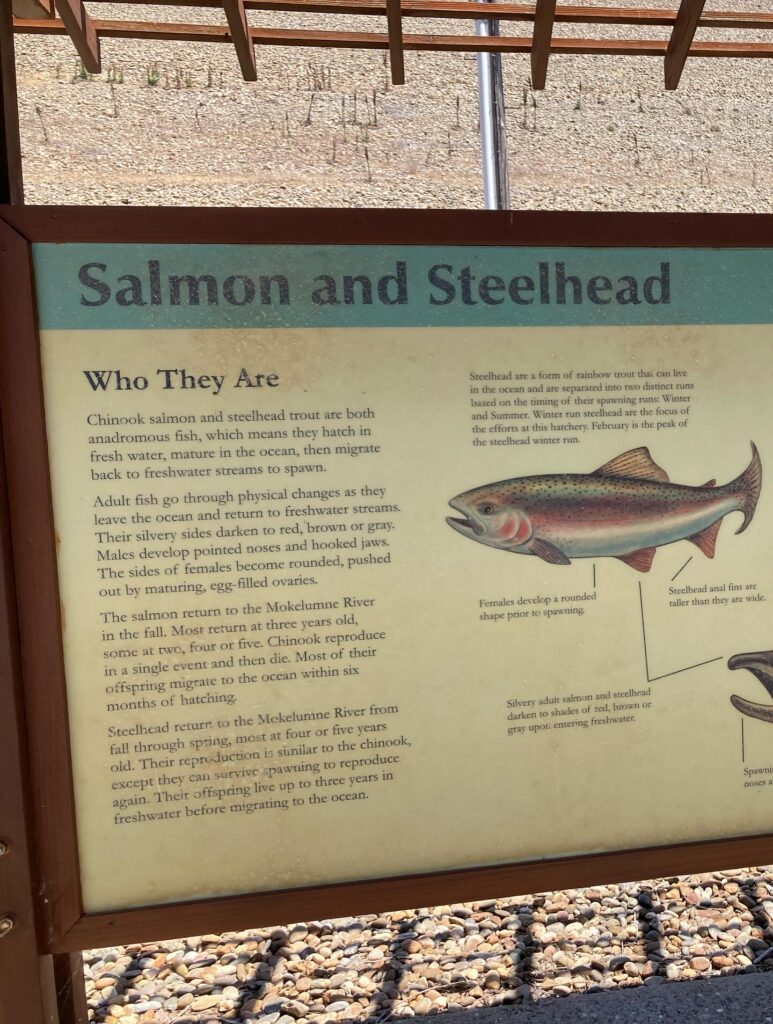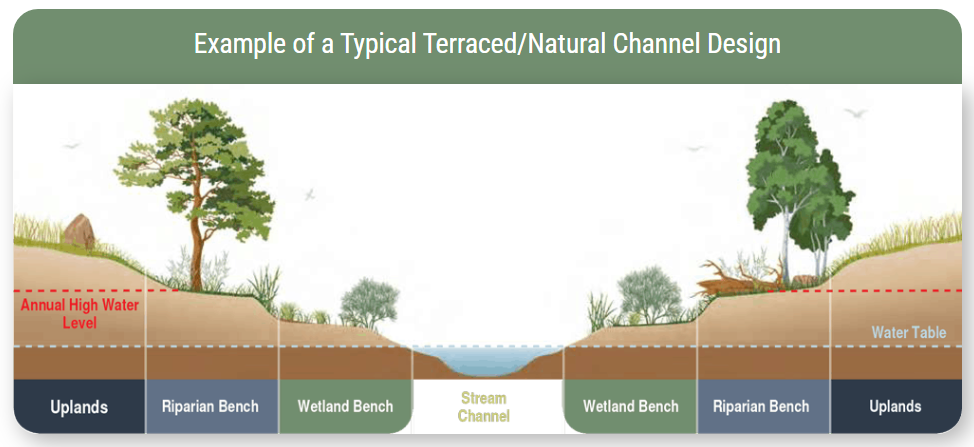Fall-run Chinook salmon are currently migrating back to the Lower Mokelumne River to spawn. Many of these fish will be spawned in the Mokelumne River Fish Hatchery. But of those that spawn in the river, many will do so in reaches where there have been floodplain restoration efforts.
Historical land use practices such as agriculture, dam construction, development, gravel mining, levee building, and water diversions have severely altered the Lower Mokelumne River’s natural floodplain processes. These impacts have caused significant losses in spawning and rearing habitat for salmon and steelhead.

Casting a line on the Lower Mokelumne River. Image: Eric Woodruff
In 2001, the East Bay Municipal Utility District (EBMUD) began the Lower Mokelumne River Spawning and Rearing Habitat Project. In each of the first three years of this project, EBMUD placed 2,500 to 5,000 cubic yards of spawning gravel in the river. Since then, EBMUD has placed 500 to 1,000 cubic yards of supplemental gravel each year in August and September, in anticipation of returning fall-run Chinook salmon. In 2021, EBMUD reported that its restoration work under this project had added 1.2 acres of floodplain that inundates at flows of ~ 700 cfs (EBMUD, 2025).

An information sign about Chinook salmon and steelhead trout on the Lower Mokelumne River. Image: Eric Woodruff
One of the main objectives of the 1998 Lower Mokelumne River Joint Settlement Agreement (JSA) between EBMUD, the California Department of Fish and Wildlife, and the U.S. Fish and Wildlife Service was to “[s]ustain the long-term viability of the salmon and steelhead fishery while protecting the genetic diversity of naturally producing populations” in the Lower Mokelumne River (EBMUD et al., 2008). Since the implementation of the JSA, the population of Lower Mokelumne River fall-run Chinook salmon has increased, culminating in record adult returns in 2023 and 2024.
EBMUD’s floodplain expansion work is accessible to the public at the Mokelumne River Day Use Area, located just downstream of the Mokelumne River Fish Hatchery at Camanche Dam. The annual gravel additions have created suitable habitat for both spawning adult Chinook salmon and rearing juveniles. EBMUD has also constructed floodplain benches, which improve channel stability, decrease flow velocity, increase riparian habitat, and strengthen bank stability (Watershed Center, 2025). EBMUD’s ongoing floodplain restoration will improve, maintain, and monitor spawning gravel beds, floodplain benches, side-channels, and seasonal inundations.

How floodplain benches work. Image: The Watershed Center
References
- EBMUD: Lower Mokelumne River Spawning and Rearing Habitat Improvement Project
2. State of California, California Environmental Protection Agency, State Water Resources Control Board, Division of Water Rights. In the Matter of Water Right License 1109 (Application 4228) of East Bay Municipal Utility District.
3. The Watershed Center: Terraced/Natural Channel Design
http://streamhandbook.org//project/terraced-natural-channel-design/
